Article's Content
“Let’s wait and see.”
If you work in marketing you have probably heard that a million times already.
Usually when you pitch a new idea, product, ebook, tactic, or strategy.
There is currently such a fear of failure in the marketing industry that it has infected our creativity and growth. And made us afraid to take risks with new content.
After a while, new ideas are pushed aside for the safety of the status quo.
On the other hand, when a piece of content blows up there’s a mad dash to get that content in front of even more people.
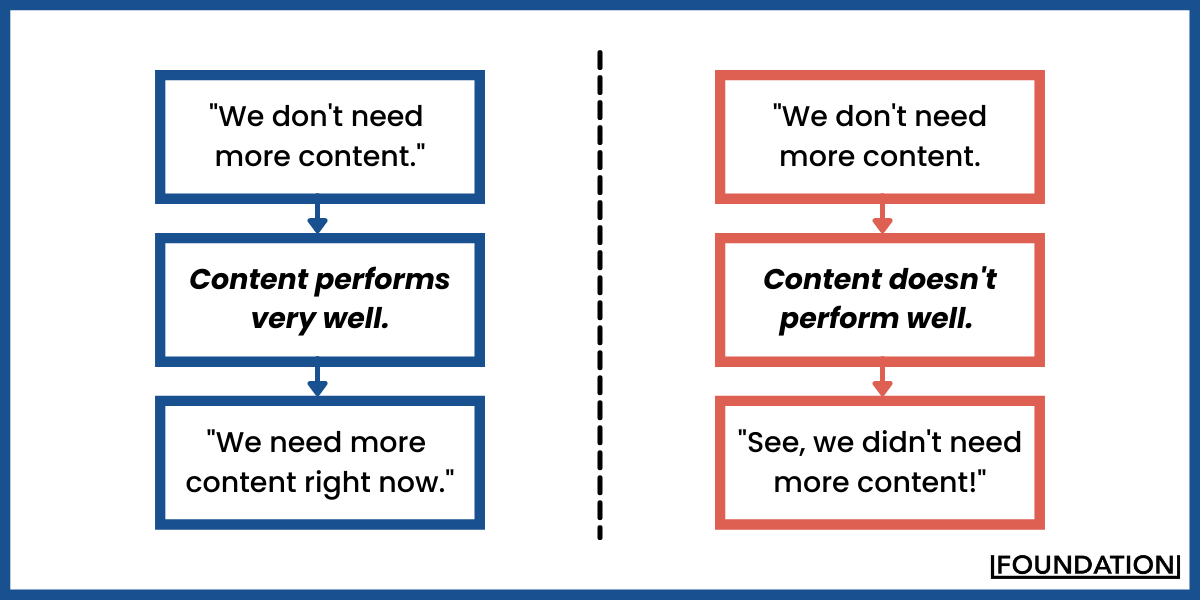
Your brand can’t exist on both extremes.
You’re going to drive your team to burnout instead of success.
Avoiding risky new content ideas while trying to squeeze every session or share out of a successful piece of content is not a sustainable marketing strategy.
I know about this vicious cycle because I lived it for a few years at the beginning of my career.
I was so afraid for people to ignore or hate my content that I didn’t want to invest more in the ideas unless it was already driving traffic or shares.
Then once it hit a made-up threshold in my head, I would start creating a thread, a slide deck, or other visual content to make sure even more people engaged with it.
It was exhausting and didn’t give my content the best chance at success.
I like to call that approach Reactive Repurposing.
I’m willing to bet that you have found yourself in the same situation. Probably more than a few times just this month!
But thankfully, I have found a better approach to repurposing that will help your content be seen by even more people in 2022.
And all it takes is a shift in your mindset.
What is Reactive Repurposing?
First, let’s break Reactive Repurposing down a bit more. Hopefully, by understanding how this cycle works, you can learn to avoid it in the future.
With Reactive Repurposing, you are waiting to see if it’s “successful” before you invest any more time or effort into it.
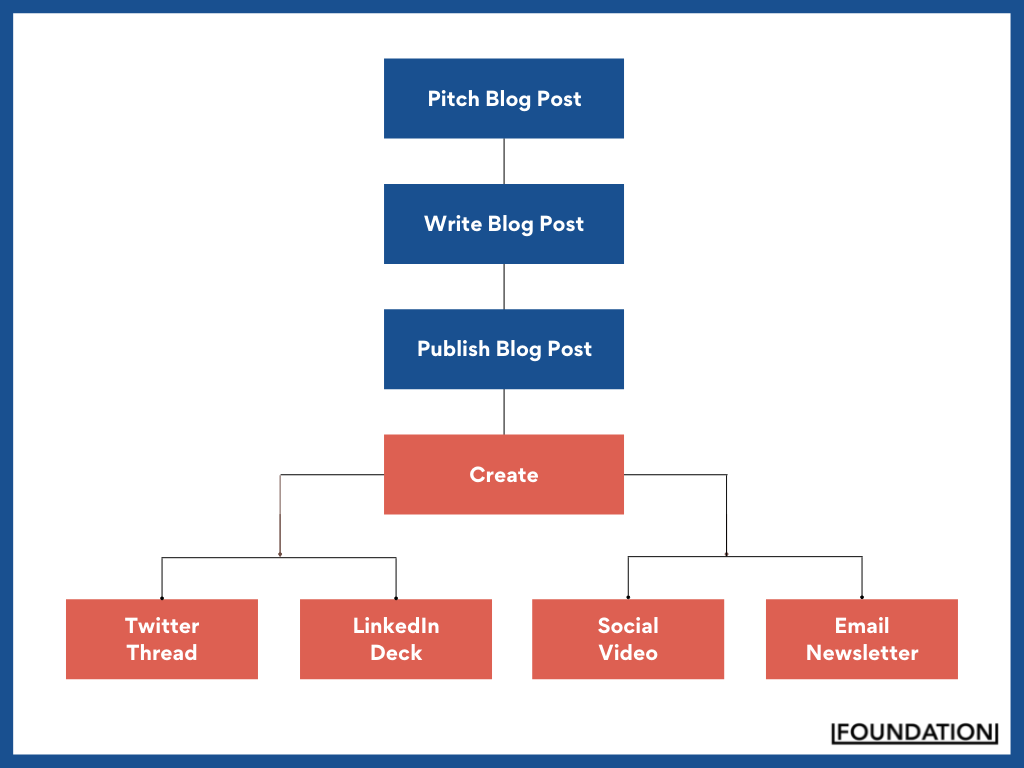
This is one of the most common traps that content marketers fall into when a new piece of content drives a ton of traffic or shares.
The gut reaction is to panic and create as much supporting content as possible.
Create a slide deck for LinkedIn. Design a visual to share with your email list. Write more social content. You can spin up a new video for YouTube with an online video editor. Ask all your employees to share the content.
Just get it in front of more people!
Those positive metrics are almost giving marketers permission to repurpose content from the original asset. Trust me, I have been there more than a few times.
But often, once they are done producing all the extra repurposed content it’s already too late.
So not only does the new repurposed content not succeed, it throws off your publishing cadence because resources have been diverted to something new:

It’s a lose-lose.
But thankfully, I have a win-win strategy for you.
Instead of reacting to a piece of content getting a ton of traction, your team should be planning for it from the beginning.
We are calling this approach Active Repurposing, and it will change how you think about content forever.
It’s that good.
What is Active Repurposing?
Active Repurposing is literally the exact opposite of Reactive Repurposing. In both practice and in the way you need to think about content production.
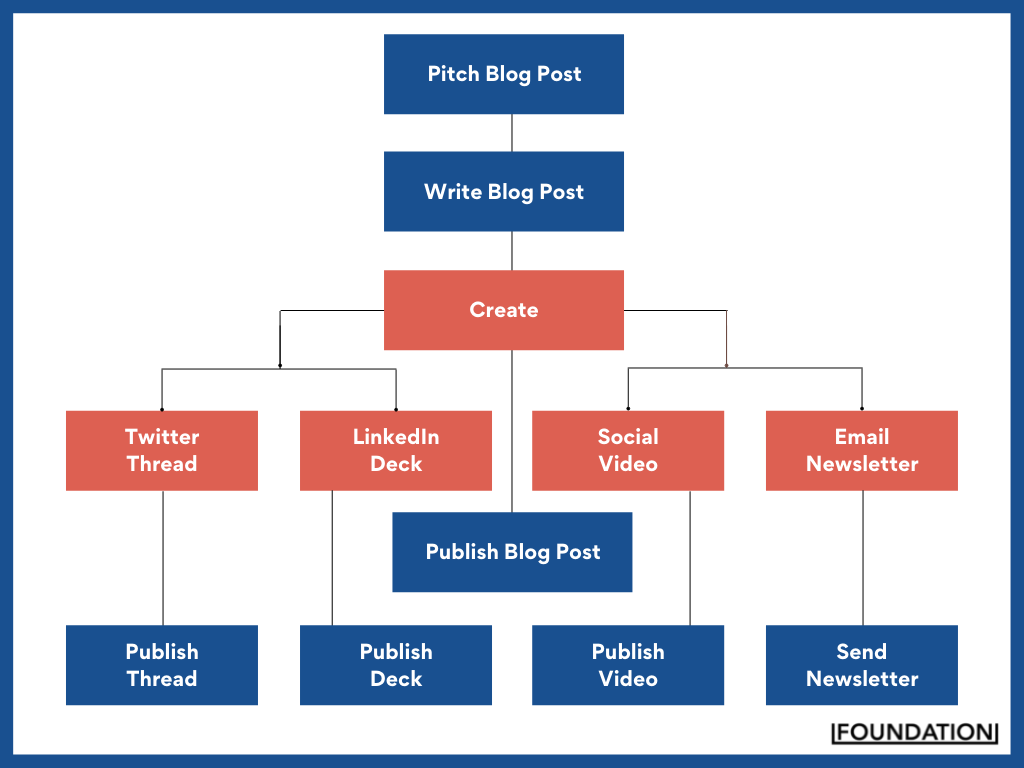
Instead of waiting until after you publish a piece of content, you start repurposing while you’re creating the original piece of content.
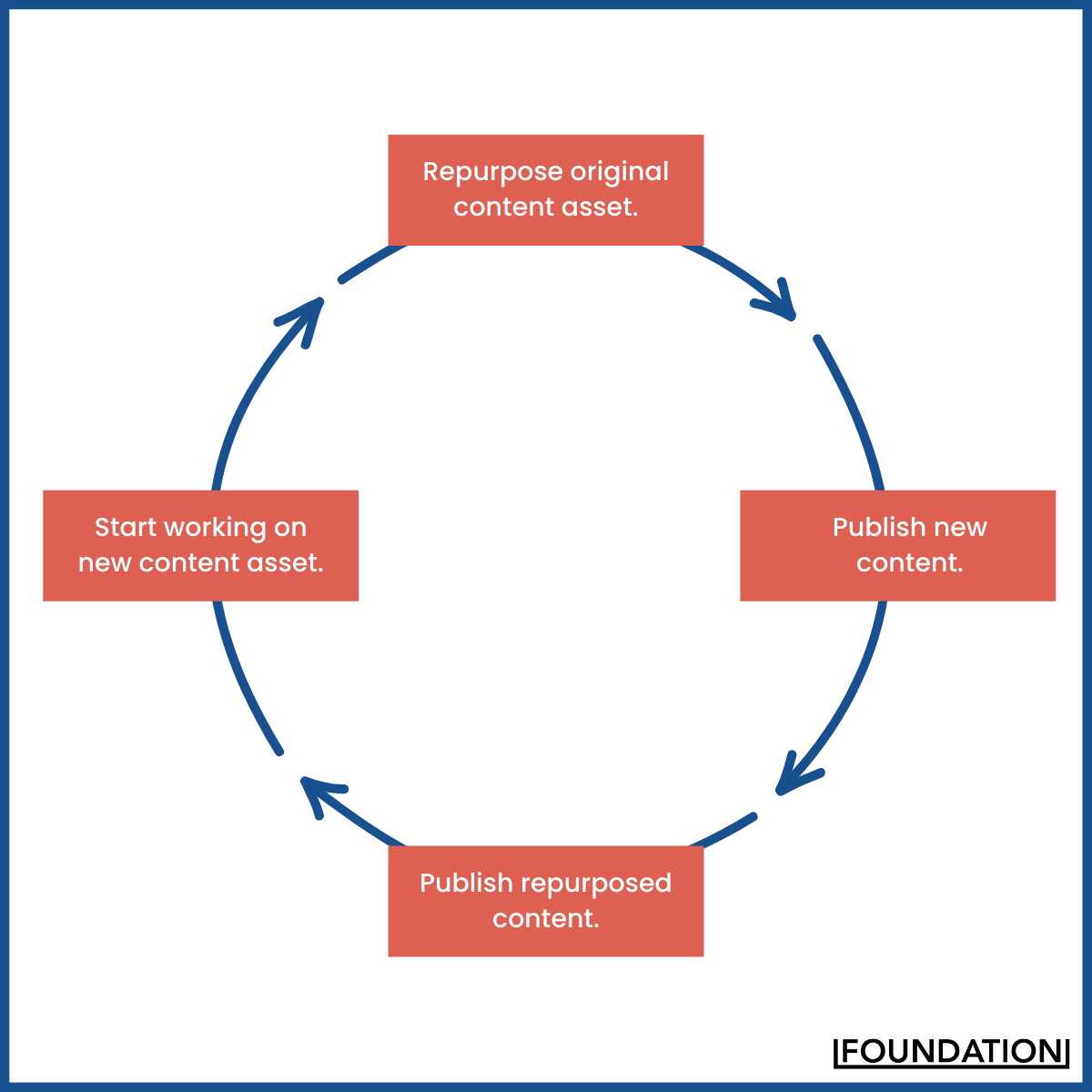
Waiting to see if an asset performs well before working on the supporting content is not an option in this mindset.
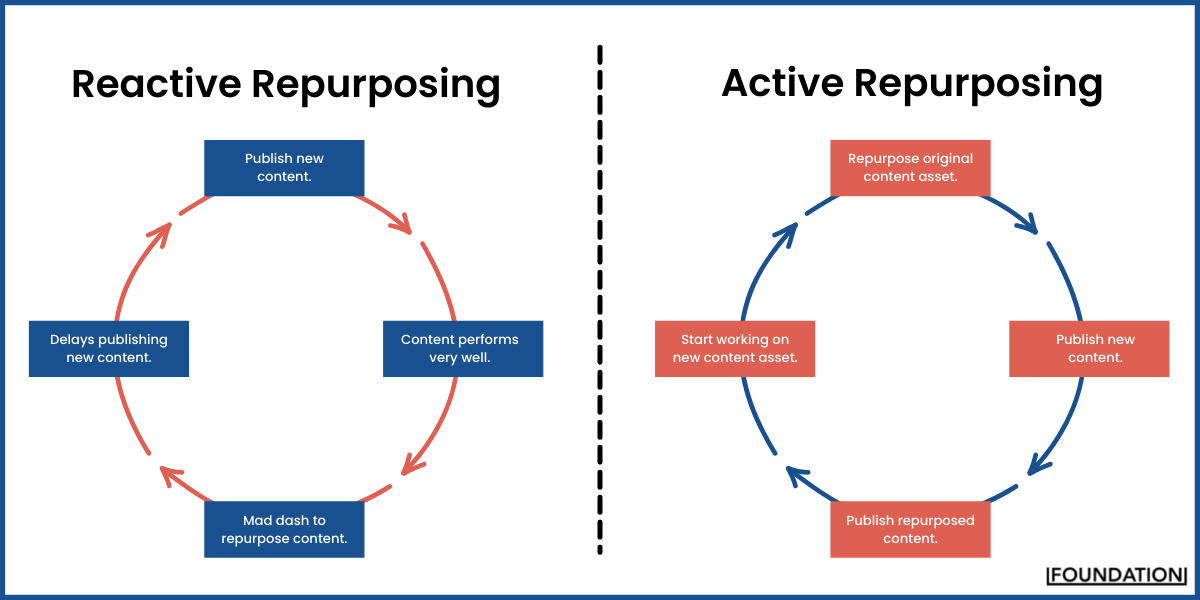
For example, as soon as I saw this tweet from Ross I repurposed it into a slide deck. I didn’t even look at the metrics, I just started repurposing because I knew it was great content:
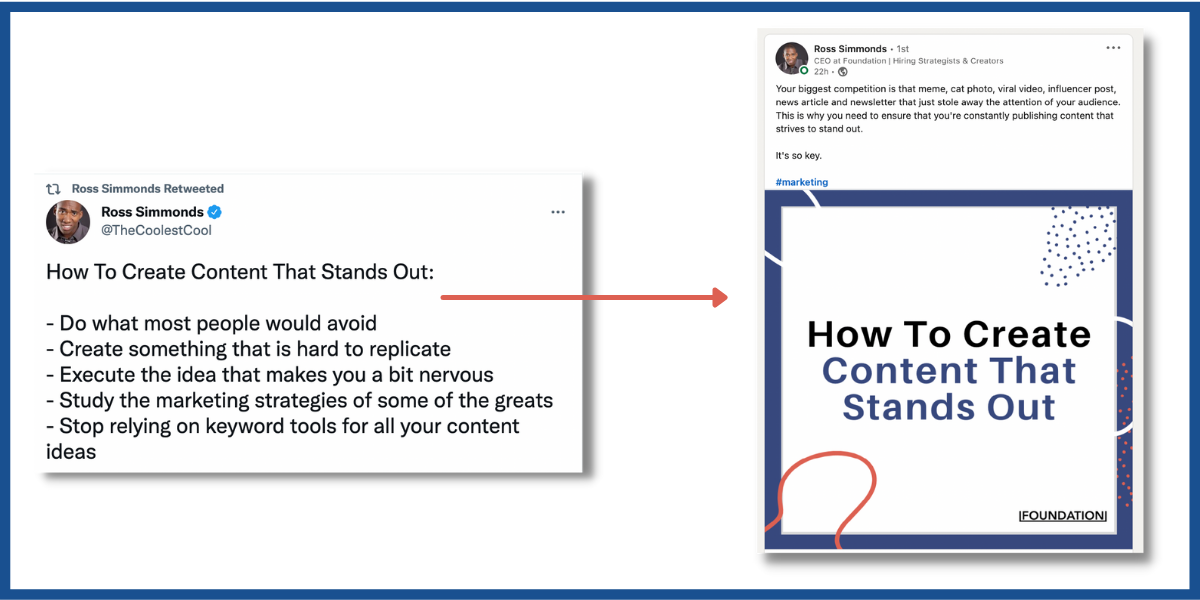
With Reactive Repurposing, you might have had to wait until a weekly review of the metrics and then plan out time to work on the deck. And then it would probably be pushed aside for another task.
As you can see in this visual, you start repurposing the content a lot earlier with Active Repurposing too:
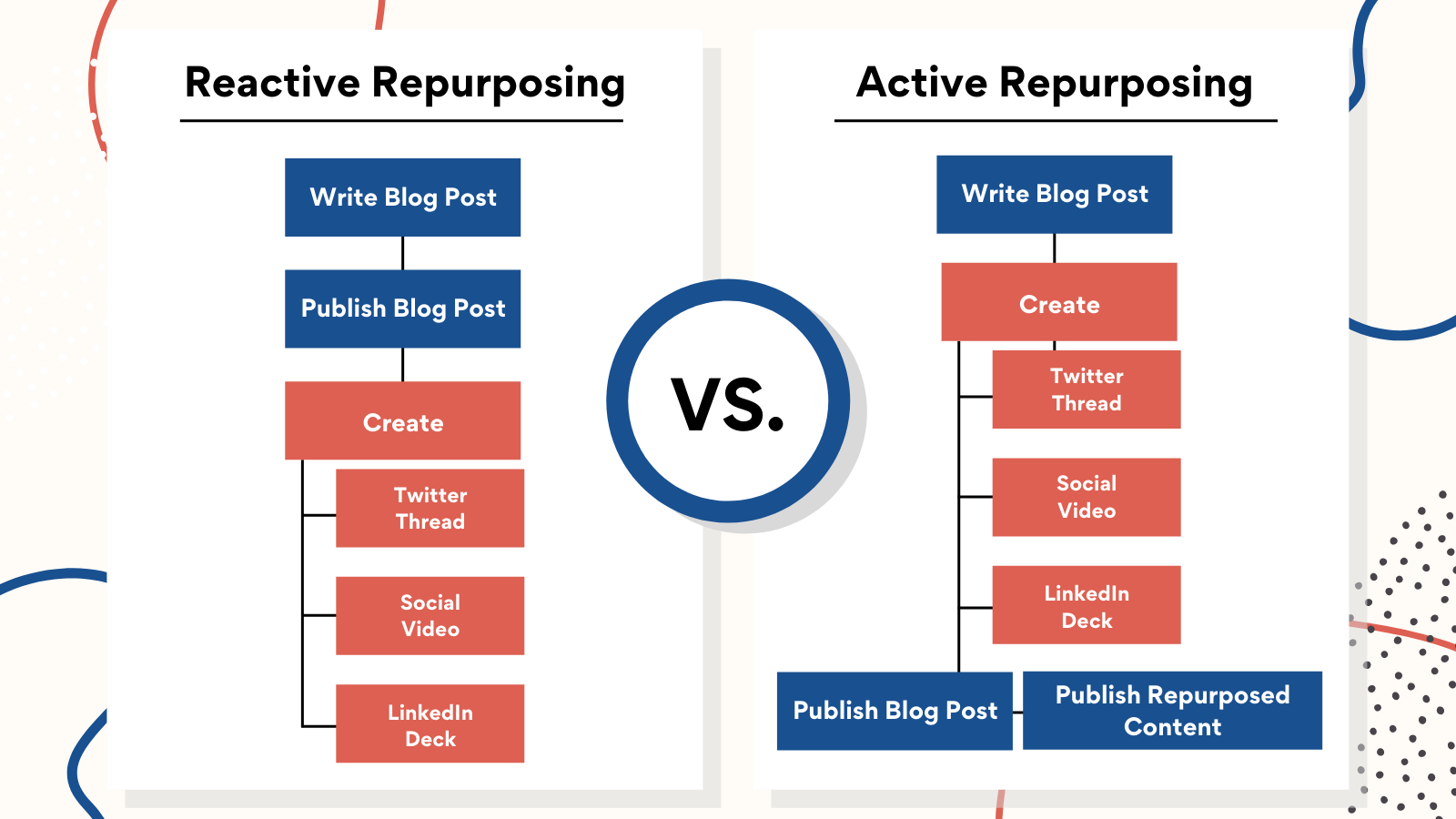
This allows you to launch the repurposed content at the same time, or around the same time, as the original asset.
It also helps your team keep a consistent publishing schedule, instead of randomly pushing out repurposed content when they finish it.
I have found this approach a lot more effective, especially for coming up with content ideas.
- Have a list that would make a great visual?
- Think the article would make a great YouTube video?
- Want to turn that process you outlined into an infographic?
All of these can be planned and finished before you launch the original asset. You just have to start thinking actively instead of reactively.
The most important thing about Active Repurposing is that you have to be confident in your content. You can’t second guess the value that your content is bringing to your readers or followers.
Otherwise, why are you publishing it in the first place?
Even if the repurposed content falls flat, you can repurpose the template or layout for something new. Or reshare the repurposed content at another time, like when you update a blog post.
Not only does this allow you to have a ton of supporting content once your original asset launches, but it also avoids the mad dash to create more content after the fact.
That mad dash can also throw off the rest of your publishing schedule, but with Active Repurposing that is a thing of the past.
Last week I talked about how you can use a Content Repurposing Menu to ensure that nothing falls through the cracks.

This is an essential part of Active Repurposing, without it maintaining your content engine becomes almost impossible.
Once you start using that Repurposing Menu, switching your mindset to Active Repurposing almost becomes second nature as well.
With the Repurposing Menu, you have already outlined the repurposing opportunities for each type of content your brand produces.
You just have to put it all into motion.
So stop waiting for permission from the universe to create more content. Just do it.
Approaching new content as a project
One of the best ways to start thinking more actively in 2022 is to approach each piece of content as a project.
Most of the time a marketing team will look at a blog post as just a blog post. And once that is published the work is done.
They see that as the finish line, rather than just a checkpoint in the race.
The distribution of that blog post is either forgotten about or not as important as just getting the post live. And forget about repurposing!
I will be the first to admit that I have had this same mindset at points in my career.
But once I started thinking about every piece of content as a project, it helped my content really take off.
A content project has a ton of moving parts and deliverables, but with the Repurposing Menu, you can plan out each of those deliverables months in advance.
For example, to support our next teardown I already know that we need to plan out:
- 2+ Twitter threads
- 15+ social shares
- An email newsletter
- A downloadable eBook
- Unique visuals
- And more!
On top of just publishing the teardown!
Under this mindset, a content asset is not truly finished until you actually publish all the supporting repurposed content.
As you can see, there are a ton of repurposed assets that you can create based on a single blog post or article.
Again, this is what “create once, distribute forever” looks like in the real world.
If you can implement this into your content production machine, while thinking a lot more actively when it comes to repurposed content, you will have a great 2022.
Not only will you create more content, but it will also be distributed to the right people!







